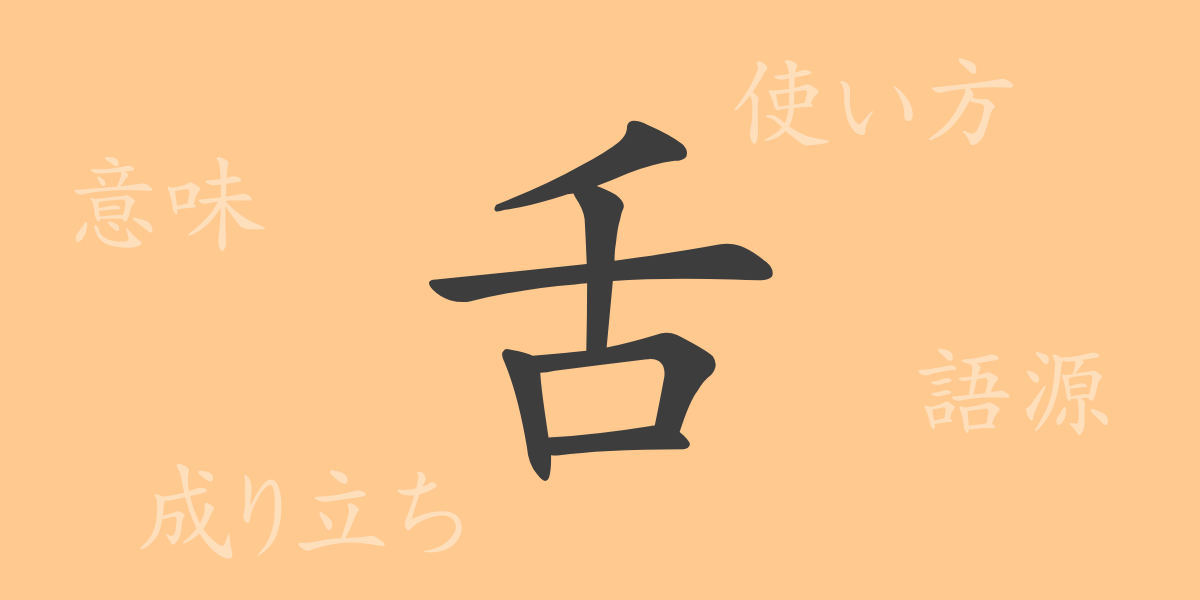The beauty of Japanese lies in its complexity and delicacy, where a single kanji can convey a multitude of meanings and emotions. The kanji “舌” (ゼツ/した), representing an essential part of human communication and frequently used in rich expressions and proverbs, is the focus of this article. We will delve deep into the origins of “舌,” its contemporary usage, and its significance in Japanese culture.
Origins of 舌 (ゼツ/した)
The kanji “舌” originated from ancient Chinese script as a pictogram resembling the human tongue. Over time, its form evolved into the current representation. This kanji not only denotes a part of the human body but also symbolizes the organ essential for speech, embodying communication and transmission.
Meaning and Usage of 舌
Directly, “舌” refers to the organ in the oral cavity responsible for taste and movement. However, it also abstractly denotes speech, manner of speaking, or the sense of taste. Expressions like “舌が肥える” (developing a discerning taste) and “舌先三寸” (glibness) illustrate its figurative uses beyond the literal meaning.
Readings, Stroke Count, and Radical of 舌
“舌” is an integral kanji in everyday Japanese, deeply rooted in daily communication.
- Readings: On’yomi (Sino-Japanese reading) is “ゼツ,” while the kun’yomi (native Japanese reading) is “した.”
- Stroke Count: The kanji “舌” consists of 6 strokes.
- Radical: The radical of this kanji is “舌部(したべ).”
Idioms, Phrases, and Proverbs Using 舌
The idioms and phrases involving “舌” often reflect human behaviors and characteristics. For example, “舌先三寸” (ゼツせんさんずん) illustrates the power of words to accomplish tasks, “舌戦” (ゼツせん) refers to a debate or argument, and “甘言蜜舌” (かんげんみつぜつ) describes seduction through sweet words. These expressions symbolize the pivotal role of the tongue in communication and persuasion.
Conclusion on 舌
The kanji “舌” symbolizes indispensable elements of human communication, transcending its physical aspect to embody the crucial role of language and expression in conveying our emotions and thoughts. Through this article, understanding the profound meanings and cultural background embedded in a single kanji character may enrich and deepen your appreciation of the Japanese language.

























